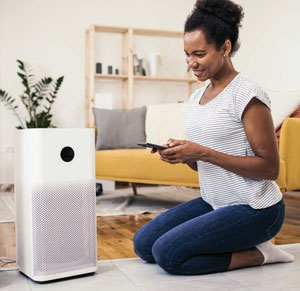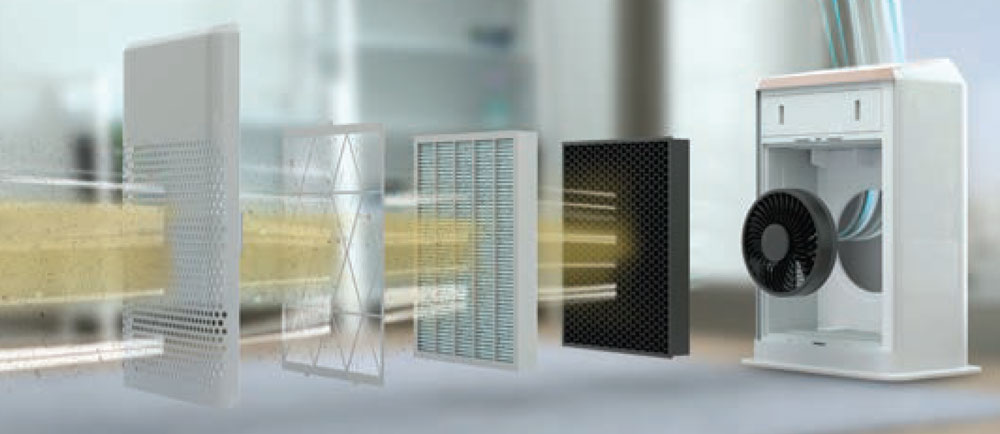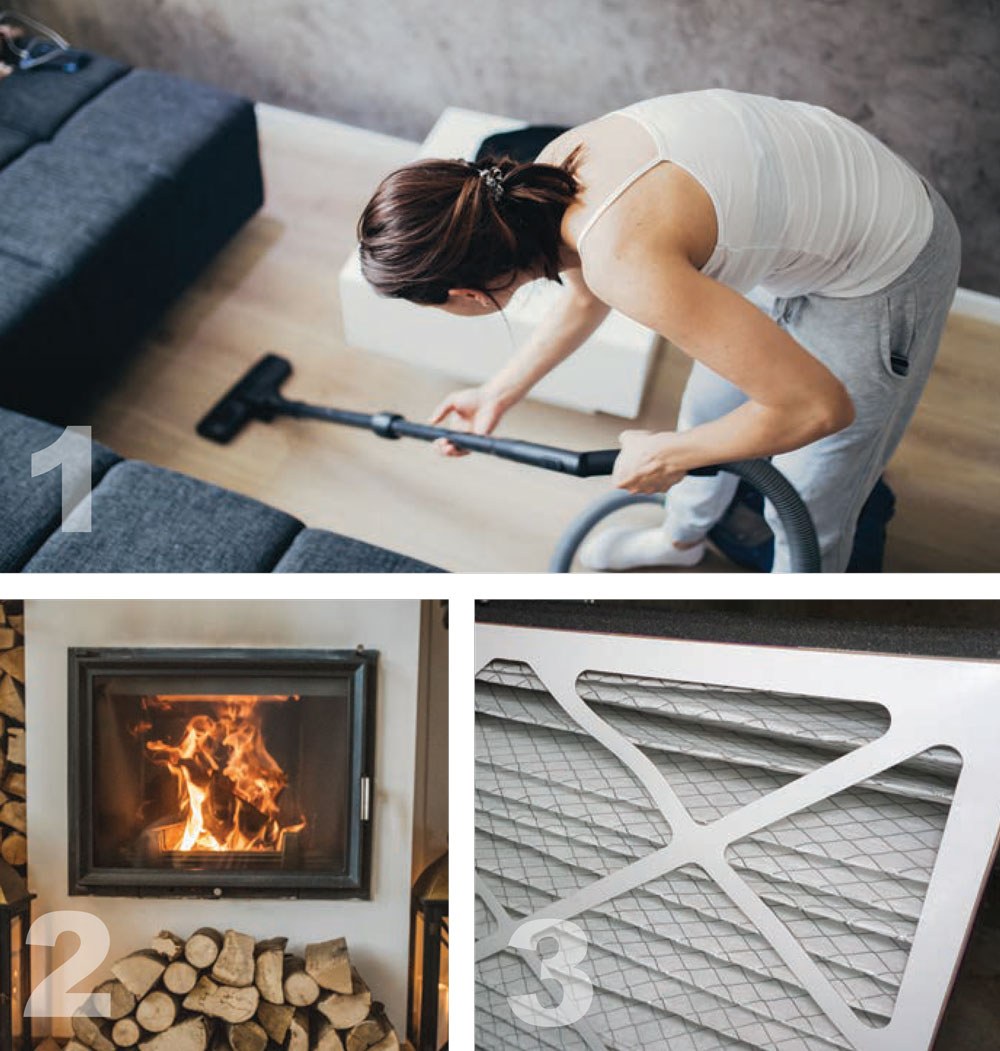Clearing the Air | Filtering Through Air Purifier Options

Cooler weather requires all of us to make changes at home to stay comfortable, such as keeping windows and doors tightly closed until mild weather returns. Although closing up our homes keeps us warm, it causes the interior air quality to drop during the winter months due to allergens and pollutants from pets, fireplaces, dryers and stoves. These airborne irritants can cause stale-smelling air and increase respiratory inflammation.
How it works
Fortunately, we can combat stale air without sacrificing comfort with air purifiers. Air purifiers remove dust, smoke and pollen from the air. They typically consist of a fan that draws in and circulates air, and a filter. As the fan pulls air through the filter, airborne particles are caught inside, and clean air is recirculated into your home. While an air purifier is not a cure-all, if you are an allergy or asthma sufferer, an air purifier may be helpful for you.
Typically, filters are made of paper, fiber, fiberglass or mesh. The best choice is a HEPA filter (high-efficiency particulate air), which removes 99.97% of air pollutants down to 0.3 microns, such as particulate matter in smoke and paint fumes. Of course, HEPA filters take care of larger particles, too, including dust, pollen and mold spores. HEPA filters use a multi-layered netting made of ultra-fine fiberglass threads, creating a dense sheet of fibers pleated and sealed in a metal or plastic frame. Depending on use, these filters need to be replaced every eight to 12 months.
In addition to HEPA filters, some air purifiers include activated carbon filters to capture odor-causing molecules. Depending on use, activated carbon filters require replacement more frequently than HEPA filters — every three to six months. However, finding an air purifier with a third washable and reusable filter that collects very large particles before they reach the HEPA and carbon filters may extend the filter life and save money on replacements. Keeping the filters clean is the key to an efficient and effective air purifier. You can connect with experts who provide Indoor Air Quality services in Sunrise, FL to clean the air in your home.
 Purifier choices
Purifier choices
Aesthetics. HEPA-equipped air purifiers come in a wide range of shapes, colors, and prices. Typically, smaller air purifiers are more aesthetically designed, but most models are non-descript and offered in neutral colors such as white, black or steel gray to fit with any décor.
Effectiveness. To achieve top-effectiveness, place your air purifier in an area with a lot of airflow, such as a hallway or near a door or window. A high-traffic area means moving air, which is more likely to lift dust, mold, and other particles so that the air purifier can suck them in and recirculate clean air. Alternatively, you can place the air purifier in the space you will get the most use out of it, such as the living room or bedroom.
Noise. Another consideration is how loud the air purifier can be without affecting your use of the space. Before purchasing an air purifier, look for its decibel levels on the packaging or website listing. For reference, 50 decibels is roughly equal to the hum of a refrigerator. However, a slightly louder air purifier may be ideal if you use a sound machine or fan for white noise. Moreover, to keep noise to a minimum, try running the air purifier on its highest setting when you’re not in the room and lowering it when you’re nearby.
Size. The best air purifier for you depends entirely on your space — the more square-footage you have, the larger the air purifier should be. Some models are small enough to put on a table top, while others must be on the floor. Purifiers come with a CADR (Clean Air Delivery Rate) that can help you calculate the appropriate size. Use this formula to help you choose the right size: CADR x 1.55 = Square footage of your room.
Price. When looking at the price of an air purifier, be sure to factor in the cost of the filters and how regularly they need to be changed. Some larger purifiers need three or four filters to be changed regularly. Spending $75 every 6 months on filters can quickly add up!
Cooler weather can cause us to feel cooped up as we wait for springtime, but circulating clean air throughout the house can be refreshing. A quality purifier improves the air quality without sacrificing warmth and comfort during the winter.
3 WAYS TO INCREASE AIR QUALITY WITHOUT A PURIFIER
WITH OR WITHOUT THE HELP OF AN AIR PURIFIER, THERE ARE OTHER WAYS TO INCREASE THE AIR QUALITY IN YOUR HOME DURING THE WINTER MONTHS.
1. Vacuum regularly. Air purifiers remove only airborne particles, not larger allergens that settle on furniture and carpets, such as pet hair or dust mites. Using a vacuum with hepa filtration once or twice a week will keep these larger irritants to a minimum.
2. Limit smoke-causing activities such as smoking, burning candles and woodburning fires.
3. Ventilate where you can. Be sure your HVAC filters are clean. If you don’t have central air, consider running the air conditioner on warmer days to move fresh air into your home. When it’s too cold, try running the exhaust fan in the kitchen, bathroom and laundry rooms when in use, and even periodically when not in use, to move stale air out of the house. ✦
Cleanability, Couches, Durability, investment, leather, lifestyle, Maximized Seating, microfiber, personal style, Sectionals, Sofas








